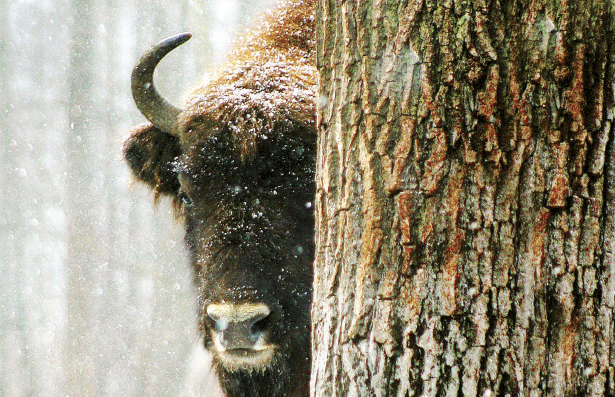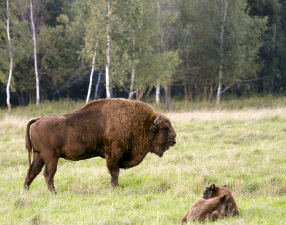The sight of such animals almost causes the heart to stop beating: their majesty seems to hail from the time of mammoths and dinosaurs. Nobody knows when they first appeared on our planet, but Aristotle mentioned them in his works.

Good-natured eyes of the giant
Europe’s largest mammal has received human protection to ensure that it avoids extinction. In fact, the number of aurochs worldwide has grown from 50 (in the early-20th century) to 4,500. Over a thousand ‘bison bonasus’ reside in Belarus alone and neighbouring Poland boasts a greater population.
However, further steps are needed, since aurochs often fall ill; the limited genetic pool leads to poor immunity, since all Belarusian aurochs are descended from the same dozen ‘forefathers’. Among the most common problems are cataracts, hearing loss and urogenital diseases, which cause infertility. Around 55-130 animals die annually.
With this in mind, we must either ‘cull’ the population, leaving only the healthiest animals, or continue increasing livestock breeding programmes. Without reasonable intervention, the species could disappear, so ecologists insist on serious stock selection: as envisaged by the 2015-2019 plan of action on auroch preservation and rational use.

Aurochs in Belovezhskaya Pushcha
The Deputy Minister for Natural Resources and Environmental Protection, Igor Kachanovsky, is convinced that the threat of European auroch extinction is no longer acute. He wishes to see efforts focused on preserving existing dissociated populations across Russia, Belarus, Poland and some other states. With this in mind, the territory of these animals’ habitat is being extended, and a joint Belarusian-Russian CIS programme has been prepared: the ‘Road Map for Aurochs’.
The General Director of the Scientific-Practical Centre on Bio-Resources (of the National Academy of Sciences), Prof. Mikhail Nikiforov, has helped create the programme. He stresses that Belarus and Russia share a mutual interest regarding aurochs, explaining, “Russia possesses vast natural territories, suitable for more independent, wild, large populations (needing less human care). The programme should be realised in five years’ time.”
Some are concerned that, if we restore this endangered breed, a new, stronger species may appear, against the ‘natural balance’ of nature, but Mr. Nikiforov is convinced that our responsibility to help this breed began long enough ago that its disappearance would create a ‘gap’ in nature. He also believes that restoring the population on a global scale is possible. In the USA, a million such bison have been cultivated, from an original 45 aurochs. Some herds are even bred for hunting. Our task is to restore aurochs to sustainability as a biological species.











